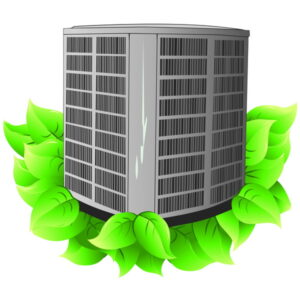 If you are thinking of making upgrades for your home’s HVAC in Lebanon, OH before the big summer heat, you’ve probably already considered the option of installing a high-efficiency air conditioning system. (After all, you landed on this page!) High-efficiency ACs are increasingly popular, but homeowners often have second thoughts about installing them because they cost more than standard efficiency ACs.
If you are thinking of making upgrades for your home’s HVAC in Lebanon, OH before the big summer heat, you’ve probably already considered the option of installing a high-efficiency air conditioning system. (After all, you landed on this page!) High-efficiency ACs are increasingly popular, but homeowners often have second thoughts about installing them because they cost more than standard efficiency ACs.
A bit of hesitancy when making an upgrade is a good thing: we recommend customers always work with us to help them make the choice that’s best for their home, and the highest-efficiency AC is not always ideal. We can’t give you a definite answer to the question in the title in a blog post because we don’t know your customized cooling requirements. You’ll need to consult with us to find an answer. But we can provide you with some important information about high-efficiency air conditioning systems that will help you start to focus on your needs.
The Advances of Air Conditioning Technology
The manufacture of central air conditioning systems has improved significantly over the past few decades. According to the US Department of Energy, today’s central ACs use 30–50% less electricity than ACs made in the 1970s. The improvements in AC efficiency have only gotten faster, so an AC today can use 20–40% less electricity than one from only ten years ago. These aren’t even high-efficiency units, but the current standards for mid-efficiency units. If you replace an air conditioner that’s more than 10 years old, you’ll see an improvement in energy efficiency even if you purchase a system similar to your current one. Already, you’re looking at a reduction in energy use.
The High-Efficiency Air Conditioning System
How efficient can a high-efficiency system be? The standardized AC efficiency rating is SEER (seasonal energy efficiency ratio), and the minimal SEER for an air conditioner to receive the US DOE’s ENERGY STAR certification is 15. (Only five years earlier, it was 13 SEER—so there’s an example of efficiency improvement.)
Although there’s no strict definition for what SEER constitutes “high-efficiency,” any air conditioner with a SEER higher than 18 could be called a high-efficiency system. Some central ACs can have SEER up to 25. These systems have special features that allow them this efficient performance:
- Variable-speed air handlers
- Scroll compressors
- Multi-stage compressors
- A thermal expansion valve for high-efficiency operation during the hottest weather
High-Efficiency Doesn’t Guarantee Savings
The potential for lowering electrical use with a high-efficiency system is enormous. However, high SEER doesn’t automatically mean an AC will save a specific home money. The SEER rating is the maximum performance of the air conditioning system, and it will not always run at such energy-saving levels—especially if it was poorly installed and improperly sized. A high-efficiency system can pay back its larger price tag thanks to its efficiency, but if it’s the wrong system for the house, it will end up costing more.
You can trust our experts to help you find the air conditioner that will provide you with the right combination of comfort and savings, whether it’s a mid-efficiency or high-efficiency system.
Call Bartels Heating & Cooling “For a Comfortable Way of Life”! We can answer all your questions about making an upgrade to a new air conditioning system.
